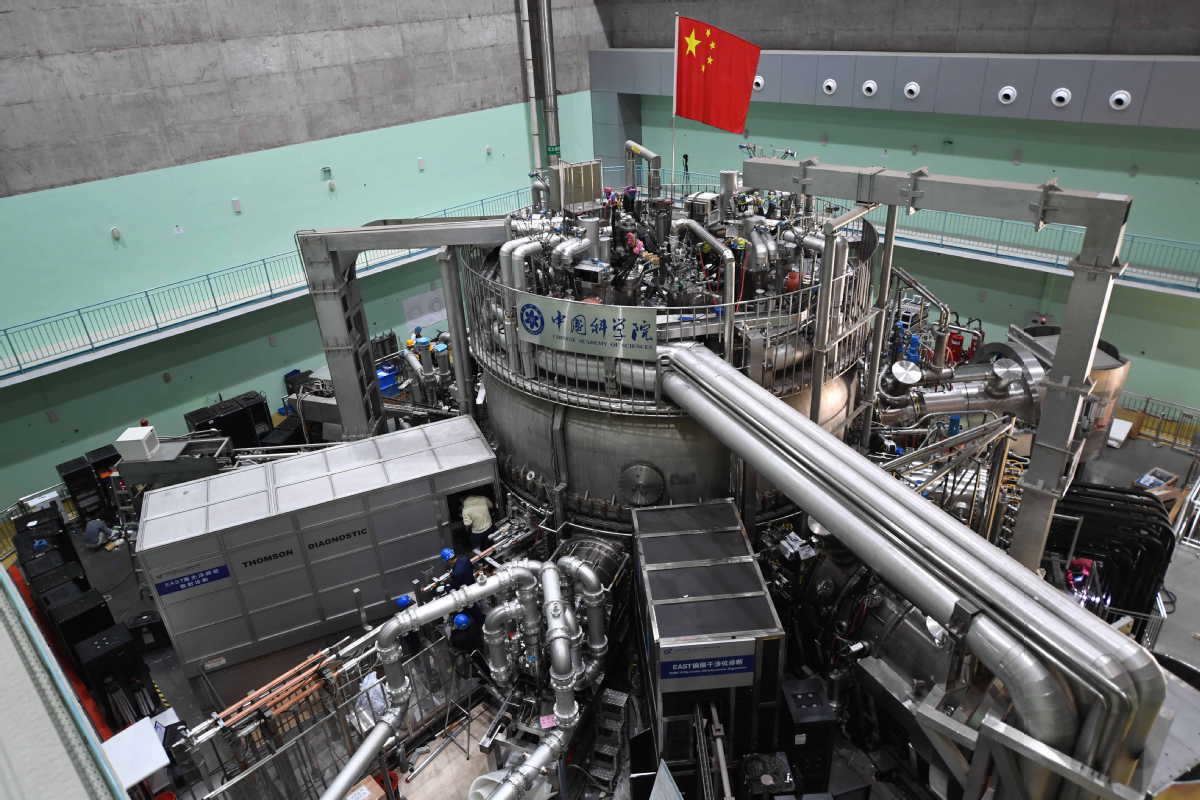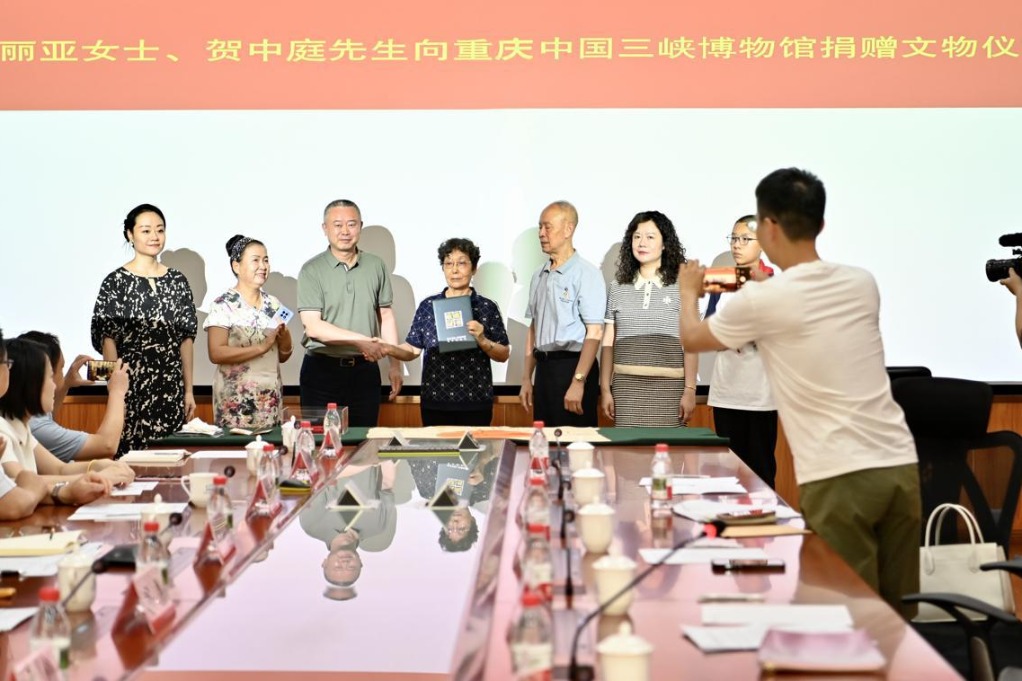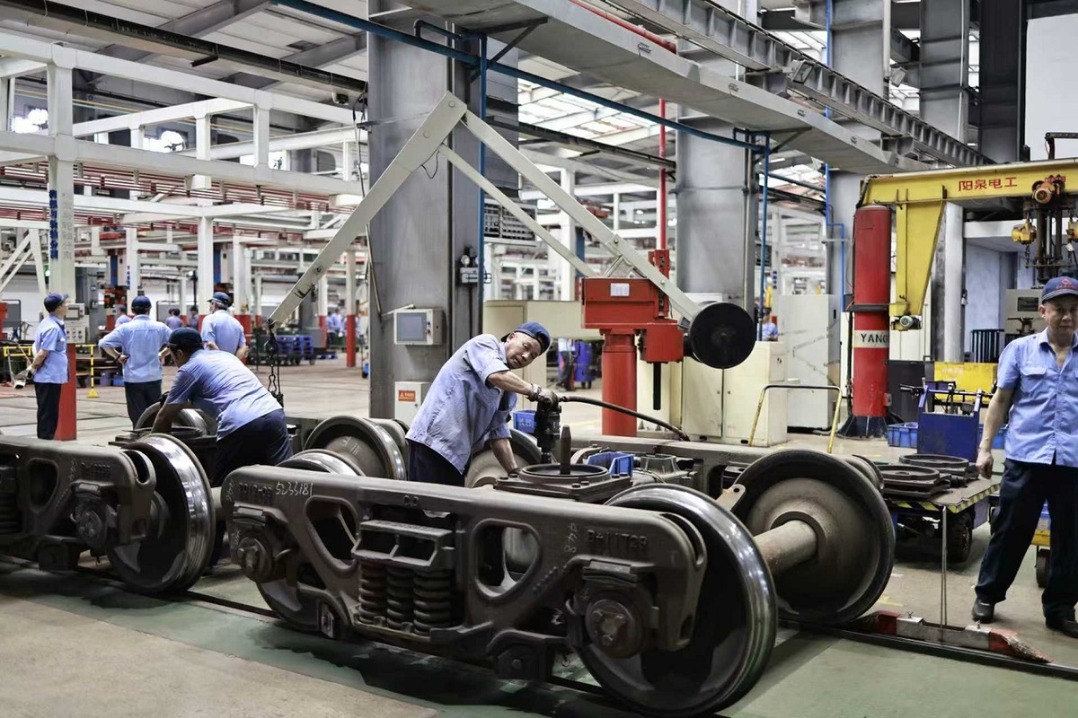Synergy and efficiency key to future of Anhui


Fundamental research, applications better linked for high-quality growth
The Party chief of Anhui province is emphasizing synergy in the high-tech sector to promote high-quality development.
Anhui's GDP grew by 8.3 percent last year to reach nearly 4.3 trillion yuan ($680 billion), with the province's high-tech manufacturing sector recording year-on-year growth of 27.4 percent, according to Zheng Shanjie, the province's Party chief.
Also a deputy to the National People's Congress, Zheng said during the ongoing two sessions that Anhui's advantages in scientific and technological innovation will better serve the economy.
"We have been supporting leading high-tech enterprises to initiate or participate in building high-level and new-type R&D institutions and form new units for integrated innovation," Zheng said.
He said such institutions and units are aimed at linking scientific findings, technological inventions and industrial development.
Last year, Anhui was home to more than 11,000 high-tech companies, and it has the most megascience facilities of any province. It was also given approval by the central authorities in 2017 to build the Hefei Comprehensive National Science Center, one of four across the country.
"We try to enable fundamental research to lead applied research, while applied research will in return press forward fundamental research," Zheng said.
One of the examples Zheng provided is the Institute of Energy at the center, which focuses on technological breakthroughs and promoting practical applications.
Founded in 2019, the institute relies on some major universities and institutes in Anhui, such as the Chinese Academy of Sciences' Institute of Plasma Physics, Anhui University of Science and Technology, the University of Science and Technology of China, and Hefei University of Technology.
It concentrates on the fields of clean coal, nuclear fusion energy, renewable energy and intelligent power grids.
China aims to lead the world's research and development in fusion science, and major facilities for the China Fusion Engineering Test Reactor are located in Anhui's provincial capital, Hefei.
It is a long-term target to make fusion energy technology ready for commercialization, while other research is expected to serve the country's carbon peak and carbon neutrality goals in the short run.
"Coal makes up 69.8 percent of Anhui's total energy consumption, so we can only replace coal gradually under the premise of energy security," said Zheng, adding that coal power will gradually become a supplementary energy source instead of the dominant one in the province.
"For industrial development, we have been upgrading what has existed, eliminating backward production capacities through selection or competition," Zheng said. "Meanwhile, we should increase advanced capacities to promote ecologically friendly low-carbon industries."
The province plans to strengthen the new-generation information technology, automobile and parts, equipment manufacturing and new materials industries, with each sector's annual operational revenue to reach 1 trillion yuan in five years.
It also aims to build 10 sectors that will each see annual operational revenues of more than 100 billion yuan. Ten individual enterprises will also each see annual operational revenues of more than 100 billion yuan.
In November, Anhui launched a new evaluation mechanism that measures enterprises' performance by their yield per unit area.
The new mechanism surveys performance in areas such as energy efficiency, output value and tax, considering the land area each enterprise occupies.
Based on the results, the government will offer more favorable policies to those who perform well, including tax incentives and land use quotas, so that resources can be focused on high-quality fields.
A similar orientation has also been applied to the province's agricultural sector, according to Zheng. Anhui produced 41 million metric tons of grain last year, a record high in the province and the fourth highest across the country.
That output means grain grown in Anhui can not only meet the needs of more than 60 million local residents, but also provide 10 million tons to other provinces.
- Media center for victory anniversary events to open on Aug 27
- Rabbits and cavies in spotlight at Shanghai Pet Fair Asia
- Over 800m railway journeys made during China's 2025 summer travel rush
- Second round of recall votes targeting Kuomintang lawmakers fails
- Audit finds disbursement of pension benefits to deceased individuals in Shandong
- China's new deep-sea explorer Haiqin completes mission in South China Sea






































